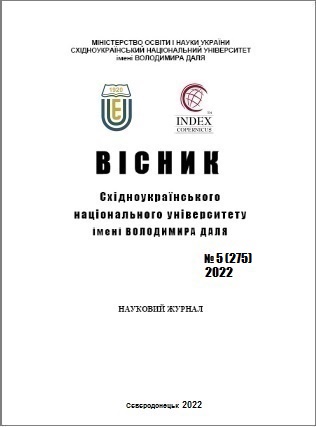The use of the multivariate antiskid sensor to gain maximum trailed load of the rolling stock
DOI:
https://doi.org/10.33216/1998-7927-2022-275-5-55-57Keywords:
sensor, electronic device, rods, skidding, electric transport, slip, adhesive coefficientAbstract
The article examines the use of the antiskid sensor to gain maximum trailed load.Skidding means the slip of wheels of a vehicle (tram, railway carriage) along the bearing surface (road, rails) where the linear speed of the wheel surface is lower than the speed of the bearing surface towards the vehicle.
The wheel slip occurs during braking. It is caused by the excess braking force over the traction with the bearing surface. Skidding of rail vehicles leads to the wear-out of locked wheels in the place of their contact with the rail and to the flat area on the wheel tire.
To prevent skidding of railway vehicles, one should regulate the braking force, depending on the load, using the cargo automatic mode or apply systems and devices of antiskid and nonskid equipment of vehicle units. The system for gaining maximum trailed load by attaching rail vehicles to the electric drive should have a skidding detection device(tram, railway carriage). At specified parameters of the engine and traction converter, the coefficient of transmission and the time constant of the nonskid device are chosen in case of steadiness.
For this purpose, one linearizes the system and builds the stability area in plane of the specified parameters using the D-decomposition method.
The final choice of the coefficient of transmission and the time constant is made so that the system will be less subject to fluctuations and the slip speed will be as resilient as possible.
The system for gaining maximum trailed load by attaching rail vehicles to the electric drive will be optimized by its supplementing with corresponding technical means that can include the use of the multivariate antiskid sensor.
Contemporary antiskid devices involving quick-response electronic equipment will allow not just preventing wheel failures but also increasing the adhesive coefficient in contaminated areas of the route.
The use of the multivariate antiskid sensor will allow obtaining a more informative useful signal in order to expand the functional capacity of the sensor, increase the reliability of its operations, which will ensure maximum trailed load of the rolling stock.
References
1. Bobyr, D.V., Hryshchenko, M.A., Serdiuk, V.N. Teoriia-lokomotyvnoitiahy / D.V. Bobyr, M.A. Hryshchenko, V.N. Serdiuk; UDUNT; NNI «Dniprov. in-tinfrastrukturyitransp.». – Dnipro, 2022. – 385 p
2. Ukraine’sRailwayOperatingRules. Kyiv, 2002. - 132 p.
3. CD-0058 Instructions on railway traffic and shunting ac-tivities on Ukrainian railways. Kyiv, 2005. - 462 p.
4. Development strategy of Ukrainian Railways JSC for 2019-2023. https://zakon.rada.gov.ua/laws/show/591-2019-%D1%80#Text
5. Multivariate antiskid sensor. Utility model patent No. 120241 dd. October 25, 2017. / Smyrnyi M. (UA); Mohyla V. (UA); Horbunov M. (UA); Kovtanets M. (UA). Bulle-tin No. 20, 2017.

